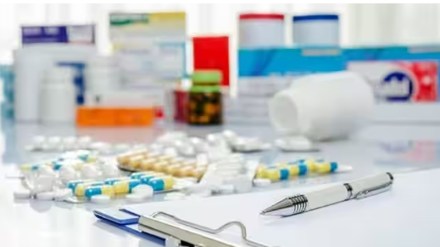Every once in a while, someone will list India’s top brands. For most consumer products, people love brands and purchase them, if they can afford to. The word “brand” is itself a loose or marketing/advertising expression, since in intellectual property terms, brand protection can be through patents, copyright, trademarks, designs, or a combination.
There are lists of the world’s most popular or valued brands. Brands have snob value. To paraphrase Thorstein Veblen from many years ago, they are the face of conspicuous consumption. Branded products are expensive, perhaps more than they should be. A brand differentiates the product. No product is a true monopoly, degrees of substitution are possible. To the extent a brand differentiates an item, the producer can charge a mark-up for that extra value, real or perceived. Given a choice, how many people will prefer to purchase an unbranded mobile rather than a branded one? It depends on the consumer, smartness of the phone, and nature of the brand (Samsung, Vivo, Apple, Xiaomi). The point is that a brand indicates quality and hence, there is brand loyalty. For every consumer product, there is a continuum, ranging from top brands to inferior brands to unbranded. On grounds of freedom of choice, if I purchase an unbranded product and it fails to deliver quality, I have myself to blame. I chose low price and inferior quality or service consciously.
Those principles, based on common sense, go for a toss the moment it comes to pharmaceuticals. The spectre of big bad pharma haunts us. Pharmaceutical companies manipulate trials, don’t tell us about side effects, get temporary monopolies through patents and other means, bribe doctors, and harm patients. Particularly for pharmaceuticals, where asymmetric information doesn’t lead to informed choice, health-care costs for patients are unnecessarily jacked up. There are grains of truth in allthese assertions. And, depending on how we define health expenditure, medicines account for a large share of costs, especially if it is out-of-pocket. We should be concerned about costs of drugs. Broadly, medicines are of three types: (1) Still on patent and therefore, a brand; (2) Off-patent and generic, but nonetheless produced by a reputed company, with a brand; and (3) Off-patent, generic, and unbranded. Rarely is there a case of a perfect monopoly. Therefore, for a particular course of treatment, there may be a choice and substitution between (1), (2), and (3), with slight variances and possibly, some differences in side-effects too, not just prices. We should be haunted not only by the spectre of big bad pharma, but also by that of Bhagirath Palace (Delhi) and what it represents. For those who don’t know, it is a wholesale market for medicines and medical equipment. In 2017, Central Drugs Standard Control Organisation (CDSCO) and police did a raid or surgical strike there and found the obvious—tax evasion, spurious and sub-standard drugs, non-adherence to temperature, and lack of other quality controls.
This is of course about distribution, but is the story remarkably different for manufacture? Official figures are that there are 3,000 drug companies and 10,500 manufacturing units. Of the latter, 8,500 are MSMEs. I have heard of good manufacturing practices (GMP) in pharma since 1988. As of now, out of the 8,500 MSME units, we know only 2,000 are GMP-compliant. If they have a turnover of more than Rs 250 crore, they now have to adopt GMP within six months. If they are below the threshold, they will be given 12 months. This promise of being GMP-compliant, which is supposed to be mandatory, has been floating around since 1988. Enforcement of Drugs and Cosmetics Act, or lack of enforcement, compounds the problem.
There was a 2003 Committee (Mashelkar Committee) on drug regulatory issues. To quote, “The figures quoted in the media and by different sources about the extent of spurious drugs in the country have varied anywhere from 0.5% to 35 %… Based on the samples tested by the state authorities, data were analysed for the period 1995-2003. According to these data, the extent of sub-standard drugs varied from 8.19 to 10.64% and of spurious drugs varied between 0.24 % to 0.47%.” There is a difference between spurious, meaning fake or counterfeit, and sub-standard. How much has changed since 2003? (The Mashelkar Committee also mentioned GMP.)
Spurious and sub-standard do not aid the cause of treatment. Since they can have adverse effects, they don’t even serve a placebo function. In general, the thrust of GMP seems to be that we need it for pharma exports to do well. We need GMP not only for exports, but for the domestic market too. Better standards for exports and inferior standards for the domestic market is not an argument that washes. MSMEs that aren’t GMP-compliant should simply close down, regardless of possible employment losses.
Given this state of affairs, what is the idea behind pushing only unbranded generic through Jan Aushadhi outlets, or the proposal (now postponed) that doctors must mandatorily only prescribe unbranded generic? That unbranded generic is cheaper is obvious. Who has quantified health costs of sub-standard drugs? Costs have aspects other than price. With asymmetric information, there is no true freedom of choice. Assuming an unbranded generic has been prescribed, as a patient, how do I decide? If pharma companies lobby and influence doctors, don’t they do that with pharmacies too? From that generic prescription, the pharmacist now recommends (1), (2) or (3). I don’t think that’s a terribly good idea.
The writer is chairman, EAC-PM
